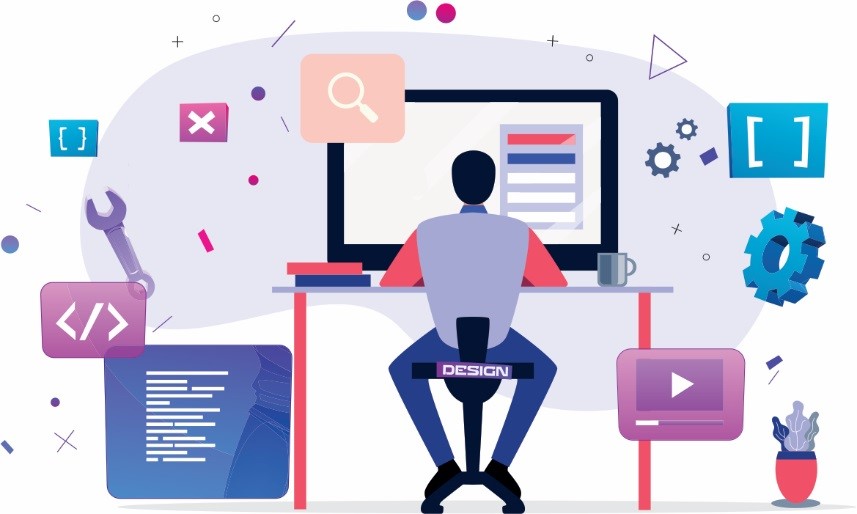Devoted Developers vs. In-House Teams: Which Is Right for You?
The decision between utilizing devoted programmers and preserving an internal group is a considerable one that can influence the trajectory of your tasks and total company approach. On the other hand, internal groups add to a natural business culture and a nuanced understanding of long-term goals.
Recognizing Committed Designers
The growing need for specialized abilities in the technology industry has resulted in the introduction of dedicated designers as a sensible remedy for several companies. These experts are generally gotten on a project basis, enabling firms to take advantage of specific experience without the long-lasting commitment linked with permanent hires. Committed designers are frequently ingrained within a customer's group, offering flexibility and scalability to fulfill job demands.
This model allows organizations to access a global skill pool, which is specifically useful in a rapidly developing technological landscape. Committed designers can be sourced from various geographical areas, guaranteeing that business can discover the ideal ability at affordable prices. They typically bring a wealth of experience and expertise, having actually functioned on varied projects across different industries.
Additionally, dedicated programmers can concentrate specifically on the tasks available, enhancing productivity and performance. They are outfitted to incorporate perfectly right into existing workflows, working together carefully with in-house groups to achieve job purposes. This technique not only reduces the problem of recruitment and training however also allows companies to remain nimble, adapting promptly to altering market demands and technical improvements.
Advantages of In-House Teams

Moreover, in-house groups tend to have a deeper understanding of the company's goal, values, and objectives. This positioning can improve staff member interaction and motivation, as staff member really feel much more linked to their job and the company's success. Additionally, having a specialized in-house team permits for much better placement of techniques and goals, as these members are continually focused on the company's top priorities.
Internal groups additionally help with quicker decision-making processes, as they can react extra swiftly to difficulties and modifications. The well-known relationships and experience with firm protocols permit structured workflows and minimized miscommunication. Eventually, the mix of a natural society, positioning with organizational goals, and efficient communication makes internal groups a beneficial property for numerous companies, especially those looking to grow long-term growth and development.
Price Factors To Consider
When examining cost considerations, both dedicated developers and internal groups existing distinct financial ramifications for companies. Involving dedicated designers commonly includes a pay-per-project or per hour rate design, which can be affordable for companies with changing task demands. This approach permits versatility in scaling resources up or down, guaranteeing that business just pay for the solutions they need.
In contrast, in-house teams require fixed prices, consisting of salaries, advantages, and overhead costs such as workplace and devices. While this model provides higher control and prompt accessibility of sources, it may lead to higher long-term costs, particularly if the workload does not warrant a full time team.
In addition, business need to take into consideration the covert costs connected with recruitment and training of in-house staff members, which can better strain spending plans. In many cases, the moment and resources spent on managing an internal group can take away from the company's core company objectives.

Task Administration and Flexibility
Task monitoring and flexibility are crucial factors that affect the selection between in-house groups and devoted developers. Devoted teams often have actually established processes for taking care of jobs successfully, leveraging specific techniques like Agile or Scrum, which promote repetitive progress and flexibility.

Eventually, the choice between specialized designers basics and in-house teams depends upon the wanted degree of versatility and the certain task administration requirements. Firms must evaluate their operational characteristics, project intricacy, and source schedule to identify which option lines up best with their tactical objectives.
Making the Right Choice
Selecting the ideal growth technique-- committed developers or internal groups-- calls for a mindful assessment of various elements that straighten with a business's calculated goals. nearshore software over here development. Think about the nature of the job. Devoted programmers may be extra ideal if it demands specialized abilities or a fast scale-up. Alternatively, in-house groups can provide far better connection and combination with existing workers.
Following, assess your budget plan. Dedicated programmers often offer an economical solution for temporary jobs, while internal groups might sustain greater long-lasting expenditures as a result of wages, advantages, and expenses prices. Evaluate the level of control and partnership desired; internal groups normally cultivate stronger interaction and alignment with firm culture.
If immediate results are essential, committed programmers can be onboarded quickly, whereas building an internal team takes time for employment and training. If constant development is essential, investing in an internal team may yield much better returns over time.
Final Thought
In conclusion, the choice in between dedicated developers and internal groups pivots on project needs and organizational objectives. Conversely, internal teams grow a cohesive society and deeper placement with long-term objectives.
The choice between using devoted designers and keeping an in-house group is a substantial one that can influence the trajectory of your tasks and general company approach.Task monitoring and versatility are crucial variables that influence the option in between internal groups and dedicated developers. software development staff augmentation.In contrast, internal teams might stand out in maintaining a constant task monitoring framework due to their experience with the company's culture and long-lasting goals. Devoted programmers frequently offer a cost-efficient service for temporary tasks, while in-house groups may incur greater long-term expenditures due to salaries, benefits, and overhead prices.In conclusion, the go choice in between dedicated designers and in-house teams pivots on task requirements and business purposes